7 Closest National Parks to Minneapolis – St. Paul
National Park Service sites in the Upper Midwest may be relatively few and far between, but that doesn’t mean you can’t put together a great national parks road trip from one of the region’s major cities. In fact, there are several awesome national parks near Minneapolis – St. Paul, from national monuments and lakeshores to “actual” national parks.
Along with Chicago, Minneapolis – St. Paul is one of the largest metropolises in this part of the country.
Home to a major airport, it’s an excellent starting point for visits to amazing places like the Apostle Islands, Effigy Mounds and Isle Royale, just to name a few.
There’s even a National Park Service site within the Minneapolis city limits! All other national parks near Minneapolis, however, do require a drive that’s at least a few hours.
But that’s all the more reason to plan an extended road trip to the beautiful parks of Minnesota and perhaps also Wisconsin, Iowa and/or Michigan.
Below, you’ll find all national parks that are within a half day’s drive from Minneapolis – St. Paul. They’re listed from the nearest national park to Minneapolis (Mississippi National River) to the furthest (Isle Royale).
Note: I use the broadest definition of “national park” in this post. This includes all National Park Service units and not just those parks with “national park” in their name. The National Park Service itself often refers to its units, regardless of their naming designation, as “parks.”
This post featuring the closest national parks to Minneapolis – St. Paul contains affiliate links. You can read more about our Terms of Use / Disclosure here.
7 Amazing National Parks Near Minneapolis – St. Paul, Minnesota
Mississippi National River and Recreation Area, Minnesota
Distance from downtown Minneapolis to Mississippi National River and Recreation Area: 10 miles (15 minutes)
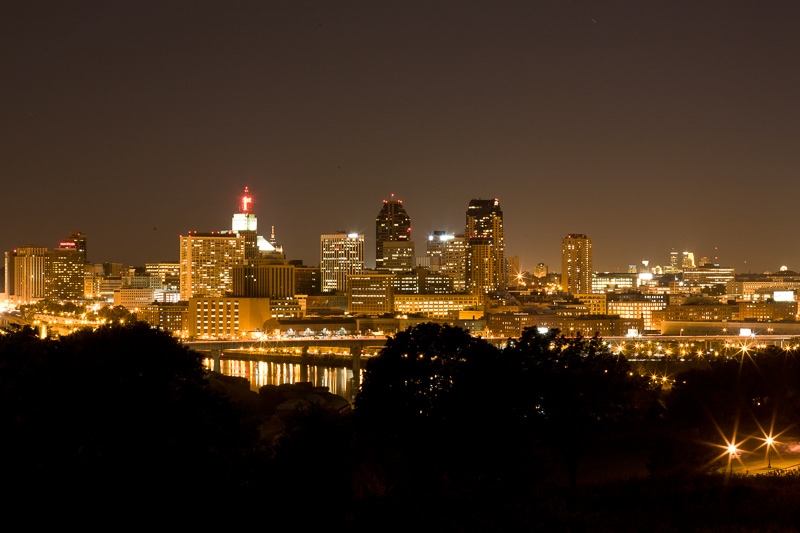
You don’t have to go very far to explore a National Park Service site in Minneapolis—there’s one right in the city, just minutes from downtown Minneapolis.
The Mississippi National River and Recreation Area protects a 72-mile corridor through the Minneapolis – St. Paul metropolitan area.
Winding its way through a bustling urban area, this Minneapolis national park offers lots of opportunities for peaceful hiking, canoeing, fishing, cycling and bird watching.
The park also encompasses numerous historic sites, as well as a number of regional parks and the popular Fort Snelling State Park.
Two visitors centers—the Mississippi River Visitor Center in St. Paul and the St. Anthony Falls Visitor Center in Minneapolis—have tons of information about outdoor recreation and exhibits about the Mississippi River’s fascinating human history.
Mississippi National River and Recreation Area website: https://www.nps.gov/miss/index.htm
Effigy Mounds National Monument, Iowa
Distance from Minneapolis to Effigy Mounds National Monument: 195 miles (3 hours 20 minutes)
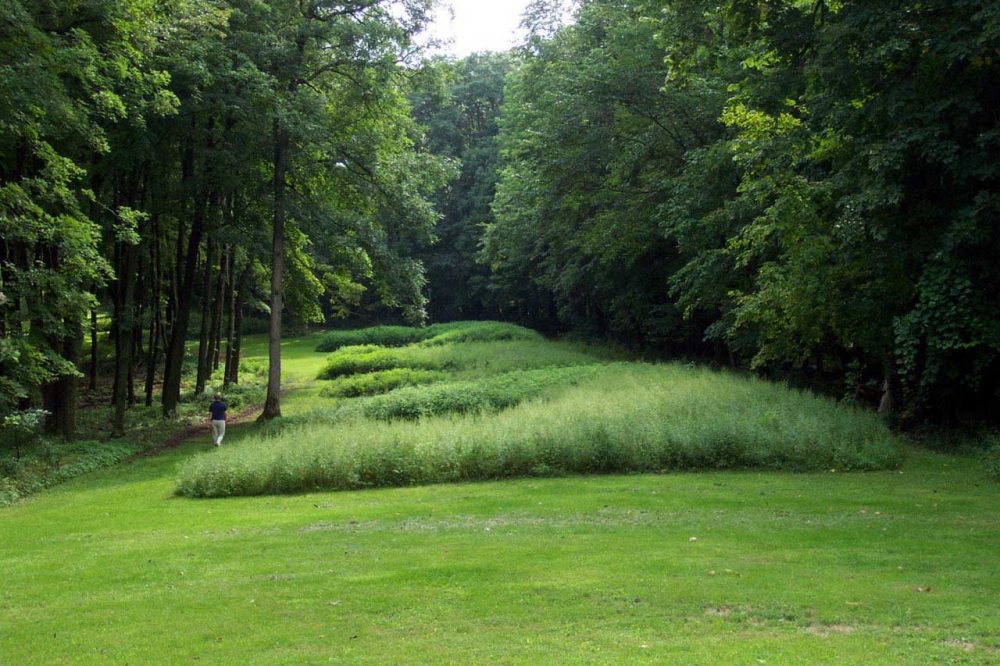
Preserving no fewer than 200 prehistoric mounds, Effigy Mounds National Monument is one of the most important parks that preserve Native American archaeological sites.
Most of these mounds were shaped like animals (effigies), which was a cultural tradition typical for this region along the Upper Mississippi.
The mounds resembled common woodland and grassland animals like bears, bison, deer, birds and lynx. In addition to these animal-shaped mounds, there were rectangular and linear mounds as well. To this day, their purpose remains unclear.
Situated about 3.5 hours southwest of Minneapolis – St. Paul, Effigy Mounds National Monument features hiking trails, ranger programs and a visitor center, all of which can give you a deeper insight into the lives and traditions of the Effigy Moundbuilders.
Effigy Mounds National Monument website: https://www.nps.gov/efmo/index.htm
Pipestone National Monument, Minnesota
Distance from Minneapolis to Pipestone National Monument: 200 miles (3 hours 30 minutes)
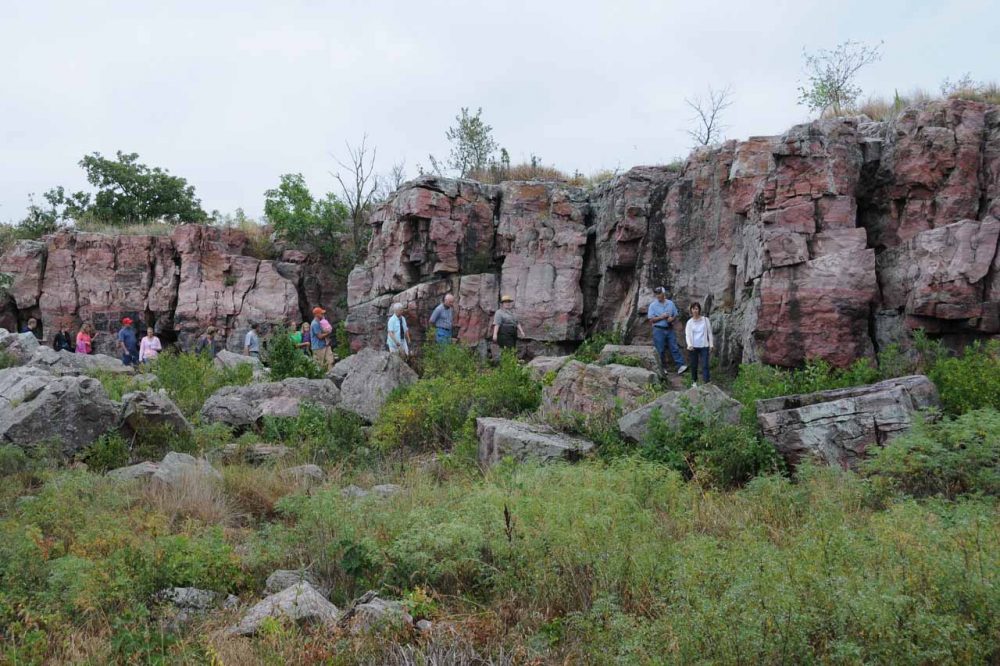
“When you pray with this pipe, you pray for and with everything.”
Black Elk
Native Americans quarried the red pipestone in this area about 200 miles to southeast of Minneapolis – St. Paul for numerous generations.
A sacred place to many North American tribes, it was considered neutral territory where all people could come and mine stone to make ceremonial pipes, often wrongly called “peace pipes” by White settlers.
A valued resource, pipestone from this site has been found in burial mounds and other archaeological Native American sites hundreds of miles away.
The smoke from these pipes is/was believed to carry a person’s prayers to the Great Spirit. People used these pipes for a variety of purposes, from ceremonial commitments to sealing treaties and religious prayers.
Ceremonial pipes one of the most iconic symbols of Native American culture(s). As such, this is one of the most significant Native American heritage sites in the United States, especially because quarrying and pipe-making traditions continue to this day on the site.
Pipestone National Monument website: https://www.nps.gov/pipe/index.htm
Apostle Islands National Lakeshore, Wisconsin
Distance from Minneapolis to Apostle Islands National Lakeshore: 230 miles (3 hours 45 minutes)
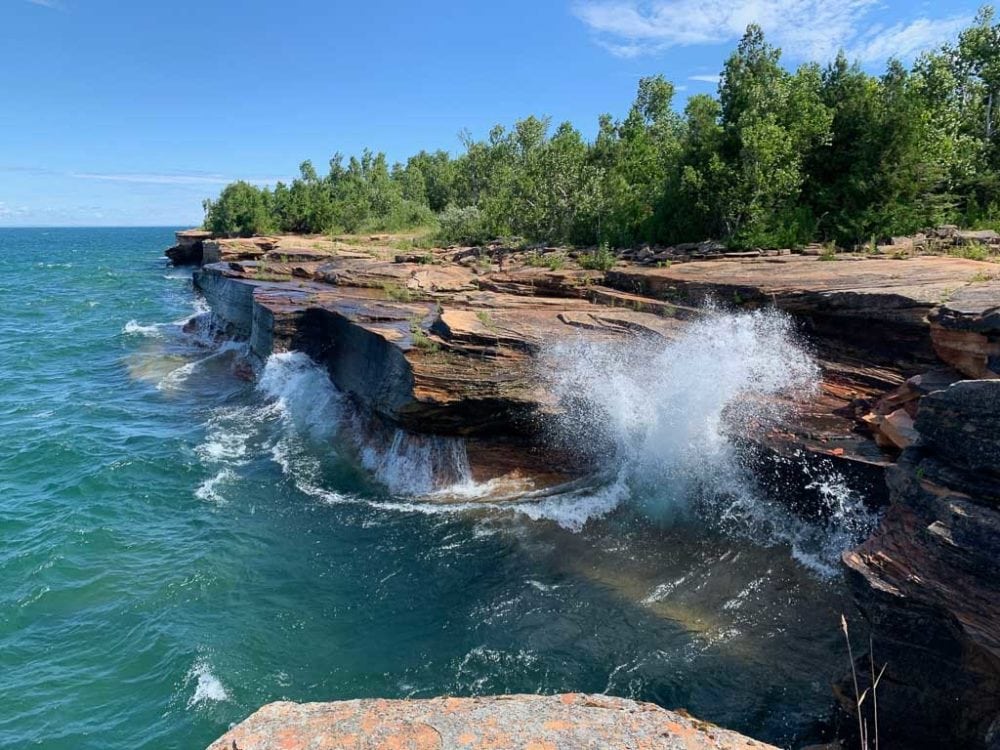
Located on the southwestern shore of Lake Superior in Wisconsin, just under 4 hours from Minneapolis – St. Paul, Apostle Islands National Lakeshore encompasses 21 of the 22 Apostle Islands, as well as a stunning stretch of lakeshore.
The islands themselves are inaccessible by car, but you can get there by sea kayak, private boat charter, water taxi or Apostle Islands cruise. (Madeline Island, the only island reachable by car, is not part of the Apostle Islands National Lakeshore.)
On the mainland, there are 12 miles of lakeshore to explore, featuring pristine forests, beautiful beaches, campsites, scenic overlooks, old farm sites and historic lighthouses.
The lakeshore’s renowned sea caves, however, are accessible only with a sea kayak, and only if the water’s calm.
Apostle Islands National Lakeshore is one of the gems of the National Park Service system, a fantastic road trip destination from Minneapolis.
Apostle Islands National Lakeshore website: https://www.nps.gov/apis/index.htm
Voyageurs National Park, Minnesota
Distance from Minneapolis to Voyageurs National Park: 275 miles (4 hours 20 minutes)
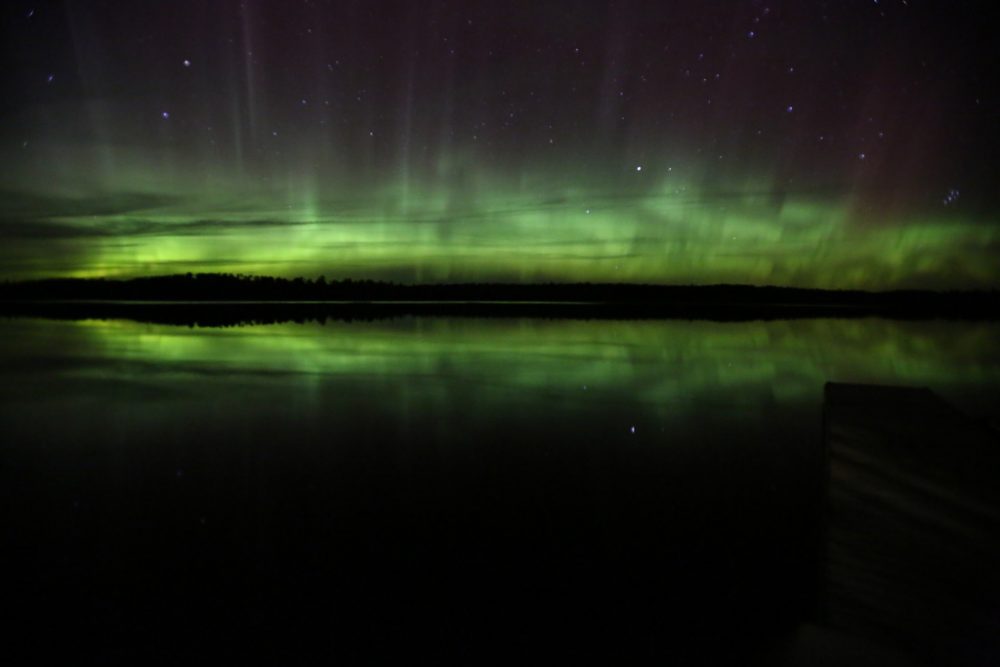
Named after the French 19th-century “voyageurs”, tough French-Canadian fur traders who traveled over land and water from Montreal in search of beaver fur, Voyageurs National Park, the only “actual” national park in Minnesota, is one of the least-known and most underrated national parks in America.
Water makes up more than a third of the park’s surface, an area dominated by lakes and pond, rivers and streams.
Voyageurs National Park essentially consists of four huge lakes, the largest of which is 24,000-acre Lake Kabetogama. Rivers connect these lakes, making this a delightful destination for a kayaking- or canoeing-focused vacation in the great outdoors.
The voyageurs traveled thousands of miles on these waterways and, now, the park allows you to follow their routes, too.
Fishing, naturally, is a hugely popular thing to do in this park, its waters home to walleye, bass, pike and lots of other fish species.
Bald eagles soar the skies, while beavers—prized for their expensive pelts by the voyageurs—thrive in these expansive waterscapes.
Additionally, Voyageurs National Park is home to large mammals, too. Moose thrive on the endless miles of lakeshores and riverbanks, while gray wolves roam the forests.
The beauty of Voyageurs National Park is that its accommodations, including all its campgrounds and the wonderful historic Kettle Falls Hotel, are only accessible by boat.
Pitching a tent at a secluded campsite after a day of paddling is as delightful as it gets. Families, too, will find this park very accessible since the use of motorized watercraft is allowed.
When camping at Voyageurs, you’ll get to enjoy an absolute spectacular night sky. Thanks to the park’s remote location—approximately 4.5 hours north of Minneapolis – St. Paul—its night skies are pitch-black and free from all artificial light pollution.
In fact, this is easily one of the best national parks for stargazing, while from November through April, Voyageurs offers some of the greatest Northern Lights watching opportunities in the contiguous United States.
Voyageurs National Park website: https://www.nps.gov/voya/index.htm
Grand Portage National Monument, Minnesota
Distance from Minneapolis to Grand Portage National Monument: 300 miles (5 hours)
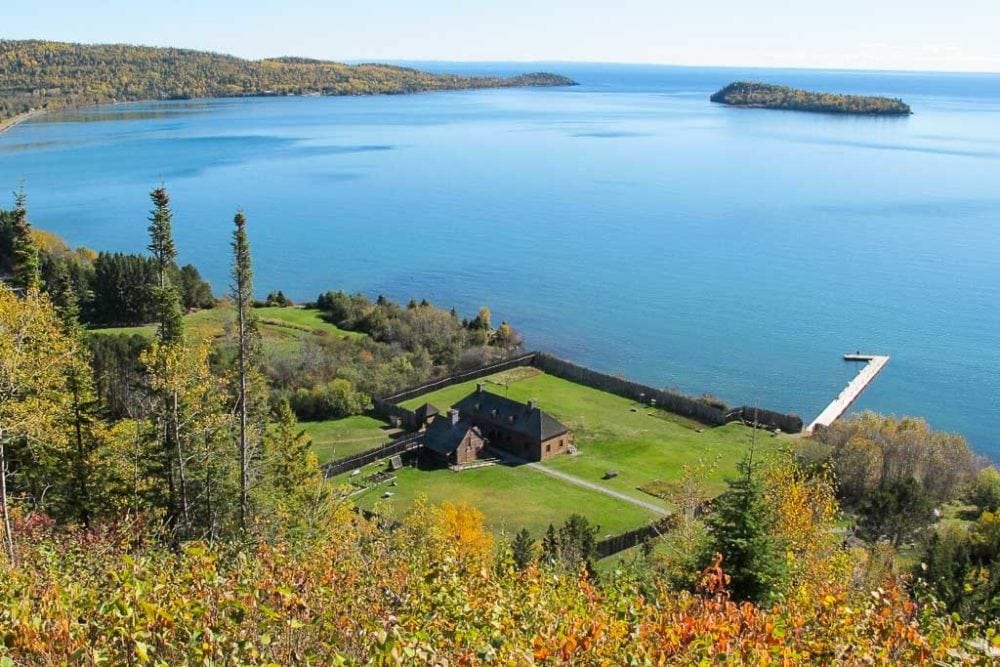
Situated on the shore of Lake Superior in the far northeastern corner of Minnesota, Grand Portage National Monument offers an insight into the lives of the Anishinaabeg Ojibwe and the voyageurs and coureurs des bois of the North West Company.
During the heydays of the 19th-century fur trade, this area bustled with activity. Crossed by historic trade routes, it was one of the four main fur trading centers of the British Empire in North America. (The others were Michilimackinac, Fort Detroit and Fort Niagara.)
The Grand Portage, after which this national monument is named, was an 8.5-mile trail that bypassed rapids and waterfalls between Lake Superior and the Pigeon River. It still exists in its original location and condition to this day.
While this description might imply that it’s mainly a Euro-American site, Grand Portage National Monument also very much focuses on the lives, culture and heritage of the area’s Ojibwe, once the most powerful Native American Tribe on the Great Lakes.
These people lived in the Grand Portage region for generations, building networks of trails and trade routes, creating beautiful art and artifacts, and generally thriving on the bountiful shores of Lake Superior.
The collections at Grand Portage National Monument includes numerous items of 20th-century Minnesota Ojibwe artwork, from porcupine quillwork and cedar bark mats to floral beaded gauntlets, belts and headbands.
Grand Portage is a great place to combine with a trip to Isle Royale National Park (see below). The Isle Royale ferry’s departure point is only two miles from the monument!
Grand Portage National Monument website: https://www.nps.gov/grpo/index.htm
Isle Royale National Park, Michigan
Distance from Minneapolis to Isle Royale National Park: 300 miles (5 hours and 2-hour ferry ride)

One of the least visited national parks in the lower 48 states, Michigan’s Isle Royale National Park is one of those places where it’s still possible to really get away from it all.
For people who are looking for wild nature, remote adventures and world-class national park wildlife viewing, Isle Royale National Park, located in the northwestern corner of Lake Superior, the world’s largest freshwater lake, is absolute bliss.
Backpackers, campers, hikers and kayakers alike will find excitement here. Numerous hiking trails zigzag across the island, while various campgrounds offer wilderness “accommodation.”
Only accessible by boat and seaplane, this isolated island is home to wolves and hundreds of moose. The numbers vary greatly from year to year, though.
Especially the wolf population has struggled recently—there were only two left at the end of 2017—and a relocation project to add more individuals is now underway.
Nevertheless, both species are common sightings in Isle Royale National Park and part of the longest running predator-prey study in the world.
The nearest ferry to Isle Royale National Park to Minneapolis – St. Paul is in Grand Portage, a five-hour drive from the Twin Cities. The ferry ride is another two hours, so consider making this a multi-day trip.
Isle Royale National Park website: https://www.nps.gov/isro/index.htm
Minneapolis National Parks Map
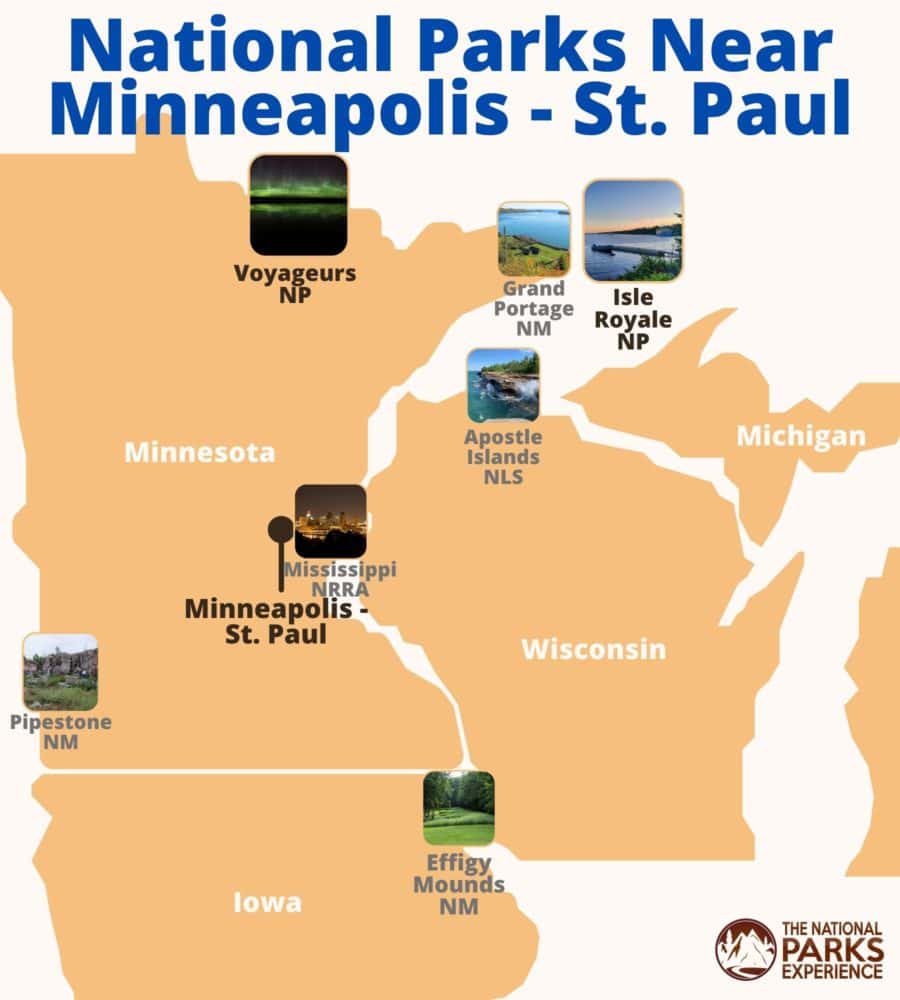
Other National Park Service Sites Near Minneapolis
Besides the national parks (relatively) close to Minneapolis – St. Paul above, there are a couple of other NPS sites in Minnesota.
- North Country National Scenic Trail, from Vermont to North Dakota
- Saint Croix National Scenic Riverway, Minnesota and Wisconsin






